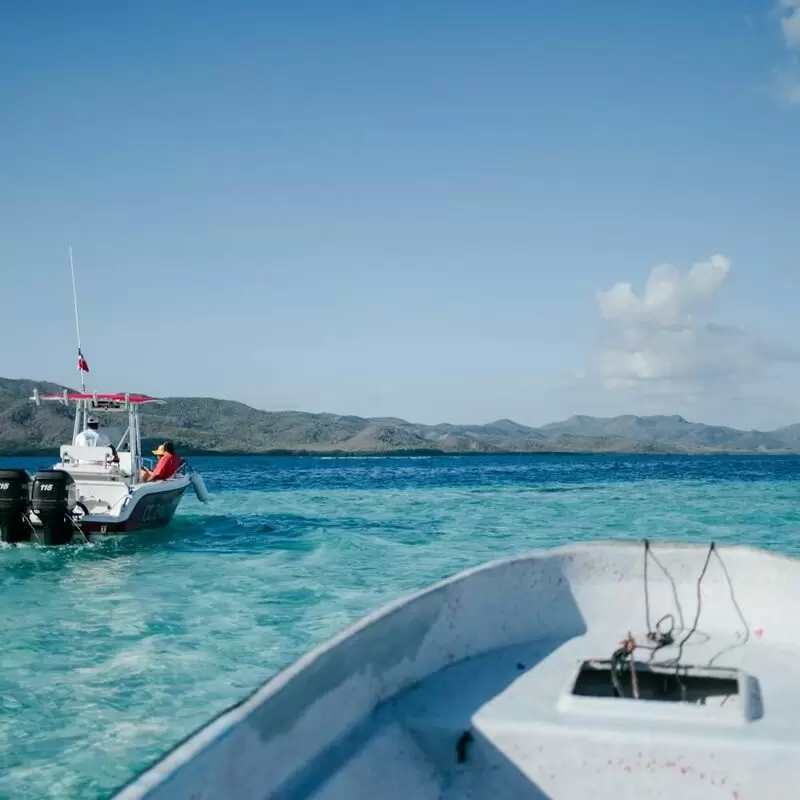
1. Isabel de Torres National Park
Discover the breathtaking Isabel de Torres National Park, where adventure and tranquility converge. Ascend via cable car to enjoy panoramic views of Puerto Plata, with the majestic Christ the Redeemer statue as your backdrop. Wander through lush tropical gardens and marvel at exotic plants. Opt for a guided hike to immerse fully in its natural beauty. Nearby, explore Fort San Felipe or relax on Playa Dorada, blending nature and culture for an unforgettable experience.
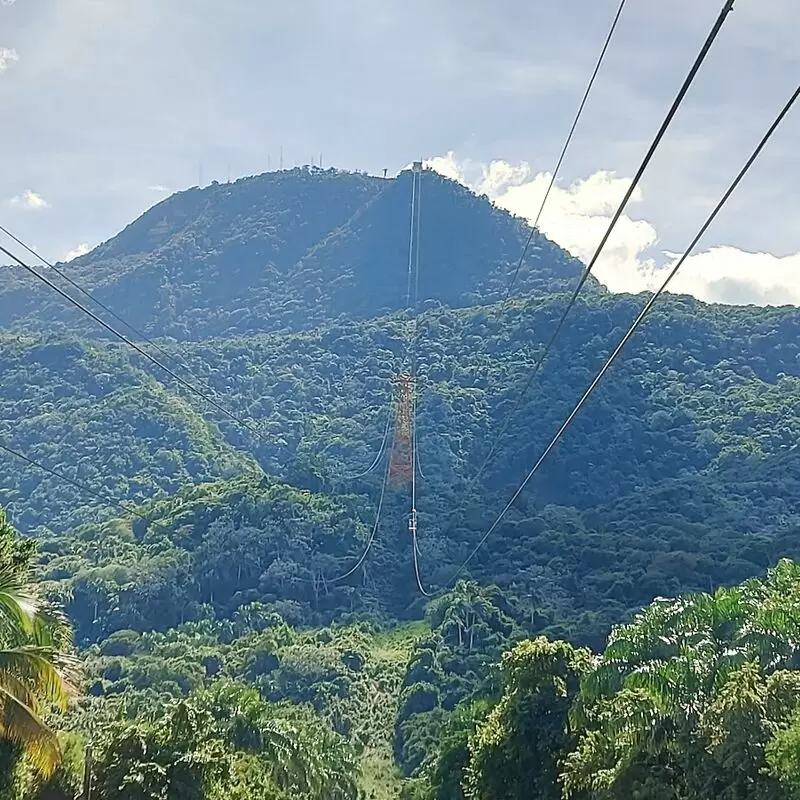 Isabel de Torres National Park
Isabel de Torres National Park
Q77Q+9QW, Puerto Plata
Monday - Sunday: 8:00 AM – 6:00 PM

Q77Q+9QW, Puerto Plata
2. La Puntilla Park
La Puntilla Park in Puerto Plata is a treasure trove of stunning ocean views and lush greenery, perfect for those looking to unwind and soak up the tropical atmosphere. Nestled alongside the iconic Fort San Felipe, the park offers an intriguing peek into history. As you stroll along its well-maintained paths, keep an eye out for the stunning artwork and sculptures peppered throughout. Nearby, you can explore the vibrant Malecón, a lively boardwalk buzzing with local flavors and captivating coastal vibes.
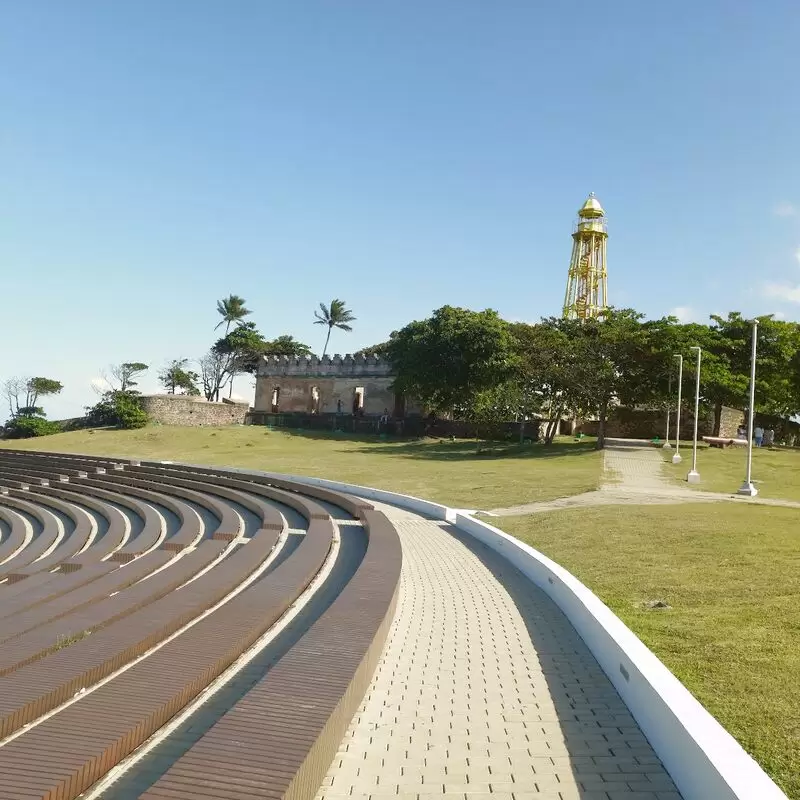 La Puntilla Park
La Puntilla Park
Av. Gral. Gregorio Luperón Av, Puerto Plata
Monday - Saturday: 9:00 AM – 6:00 PM
Sunday: Open 24 hours

Av. Gral. Gregorio Luperón Av, Puerto Plata
Sunday: Open 24 hours
3. Amber Cove Cruise Port
Amber Cove Cruise Port in Puerto Plata is a vibrant gateway to Dominican paradise. Experience the stunning beauty of the Caribbean with lush mountains as your backdrop. Stroll through charming shops or unwind at the oceanfront infinity pool, a perfect spot for sipping a cool piña colada. Don’t miss the zip line adventure for a thrilling view. Nearby, discover the historic charm of Fort San Felipe. Dive into the essence of the Caribbean, where adventure and relaxation await.
 Amber Cove Cruise Port
Amber Cove Cruise Port
Maimón, 57000
Monday - Sunday: Open 24 hours

Maimón, 57000
4. Ocean World Adventure Park Puerto Plata Dominican Republic.
Dive into an unforgettable experience at Ocean World Adventure Park in Puerto Plata, where adventure meets tranquility. Swim with playful dolphins, feed exotic birds, or marvel at the marine life in the tropical reef aquarium. This park offers behind-the-scenes animal encounters and nightly beachside events. Just a short ride away lies the enchanting Fort San Felipe, offering a taste of history with stunning ocean views—turn your trip into a perfect blend of thrill and culture.
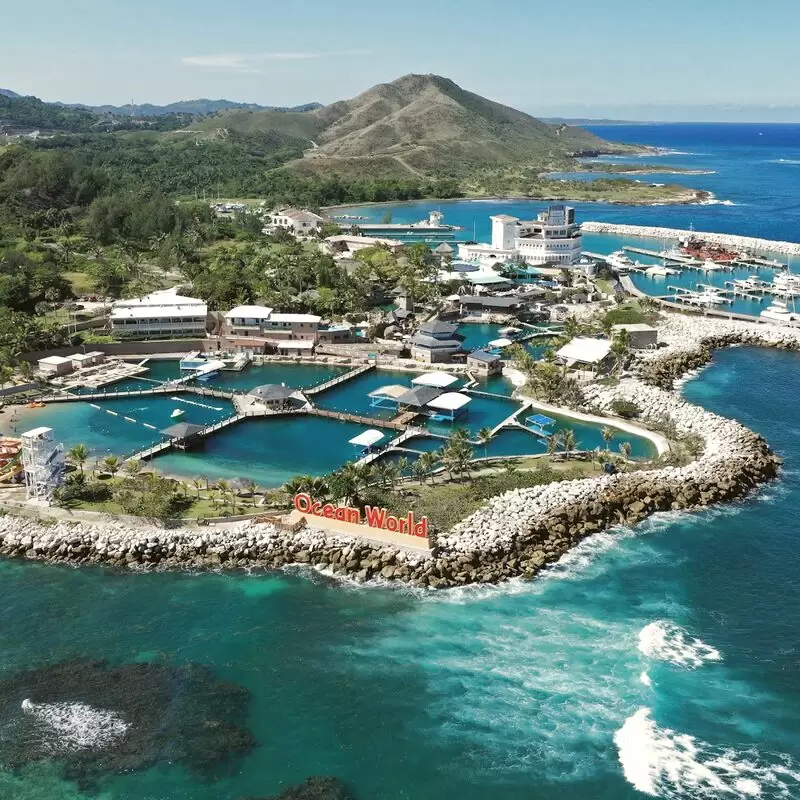 Ocean World Adventure Park Puerto Plata Dominican Republic.
Ocean World Adventure Park Puerto Plata Dominican Republic.
Calle Principal #3, Cofresi, Beach Cofresi Beach, Puerto Plata
Monday: Closed
Tuesday - Sunday: 8:30 AM – 5:30 PM

Calle Principal #3, Cofresi, Beach Cofresi Beach, Puerto Plata
Tuesday - Sunday: 8:30 AM – 5:30 PM
5. Puerto Plata Cable Car
Experience the thrill of the Puerto Plata Cable Car as it ascends to the stunning peak of Mount Isabel de Torres, offering unparalleled panoramic views of lush landscapes and the vibrant city below. This unique journey reveals a hidden botanical garden at the summit, perfect for scenic strolls. Snap a selfie with the towering Christ the Redeemer statue. Nearby, explore the historic Fort San Felipe, blending culture and nature into one unforgettable visit. A must-see blend of adventure and serenity.
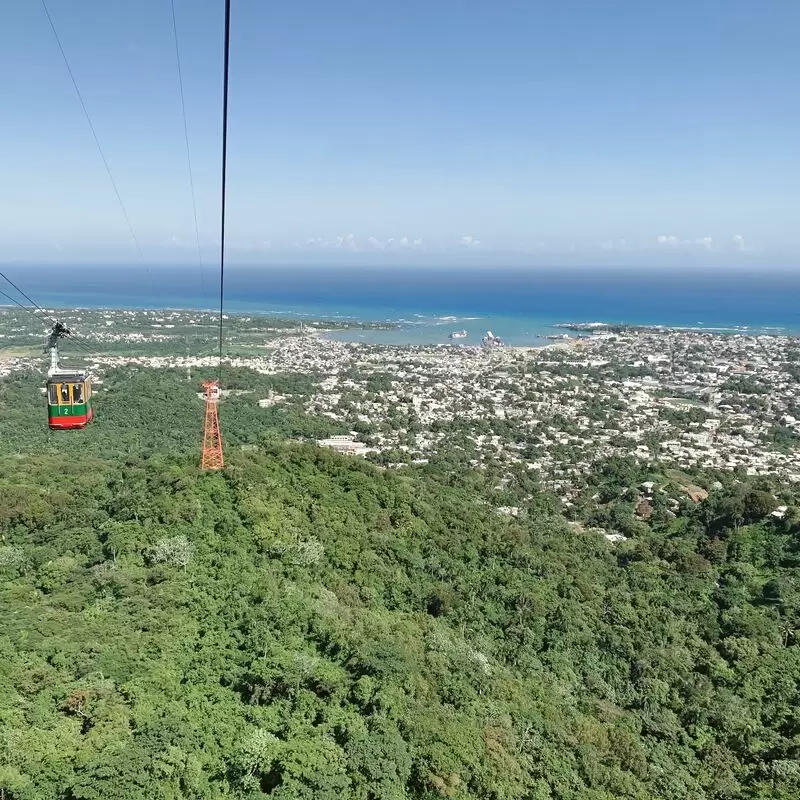 Puerto Plata Cable Car
Puerto Plata Cable Car
C. del Teleférico, Puerto Plata
Monday - Sunday: 8:30 AM – 5:00 PM

C. del Teleférico, Puerto Plata
6. Independence Park
Step into the heart of Puerto Plata at Independence Park, where history meets vibrant local culture. Experience the rhythmic sounds of merengue dance nights and savor authentic Dominican street food from nearby vendors. Encircled by grand Victorian mansions, this oasis is ideal for people-watching and soaking up Caribbean charm. Just a short stroll away, discover the historic San Felipe Fort and take in breathtaking coastal views. Independence Park is your perfect starting point for an unforgettable Dominican adventure.
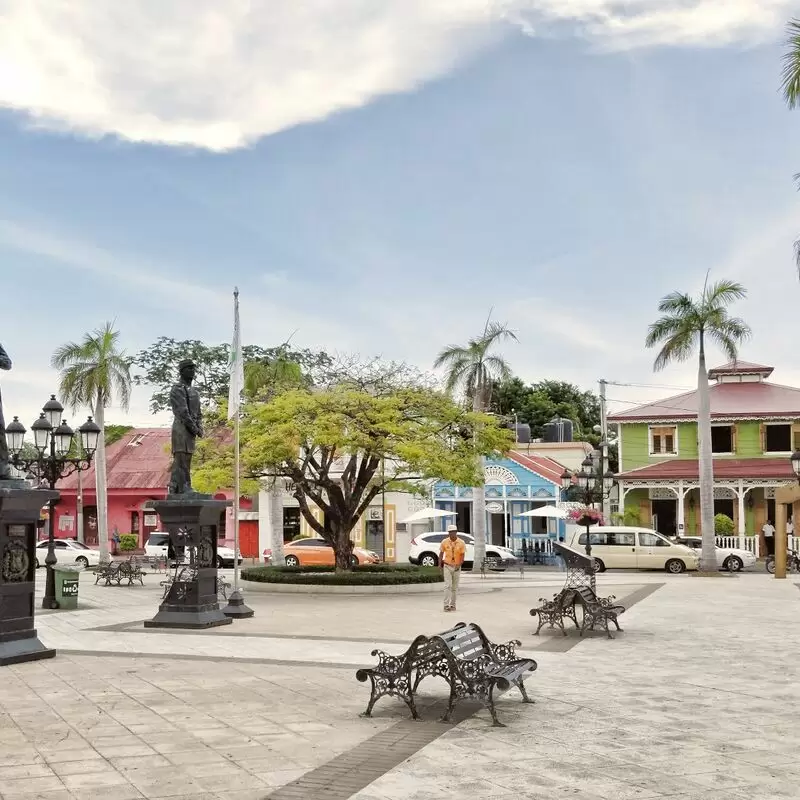 Independence Park
Independence Park
C. Beller, Puerto Plata
Monday - Sunday: Open 24 hours

C. Beller, Puerto Plata
7. Fortaleza de San Felipe
Explore the rich history and stunning views of the "Fortaleza de San Felipe," a 16th-century fortress built to ward off pirates and other invaders. Perched on a picturesque bluff overlooking the Atlantic Ocean, it offers breathtaking panoramic views. Inside, discover antique cannons and stories of the past. Just a short walk from the fortress, the bustling Malecón and the Amber Museum await, promising a full day of adventure and discovery in Puerto Plata.
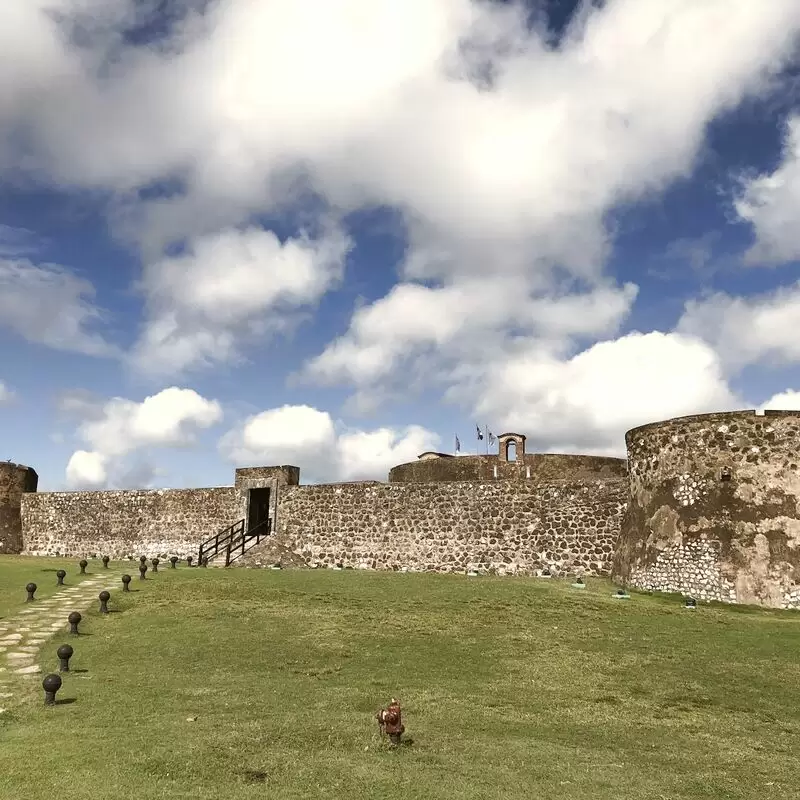 Fortaleza de San Felipe
Fortaleza de San Felipe
El Faro de Puerto Plata, Parque San Felipe, Av. Gral. Gregorio Luperón, Puerto Plata
Monday: Closed
Tuesday - Sunday: 9:00 AM – 5:00 PM

El Faro de Puerto Plata, Parque San Felipe, Av. Gral. Gregorio Luperón, Puerto Plata
Tuesday - Sunday: 9:00 AM – 5:00 PM
8. Umbrella Street
Stroll down José del Carmen Ariza Street, famously known as "Umbrella Street," and immerse yourself in a kaleidoscope of colors. Vibrant umbrellas suspended overhead create a dazzling canopy that dances in the Caribbean sun. This enchanting spot is a dream for photographers and Instagrammers. Just around the corner, explore the charming Central Park and visit the stunning Cathedral of St. Philip the Apostle. Capture the spirit of Puerto Plata in one unforgettable stroll through this magical area.
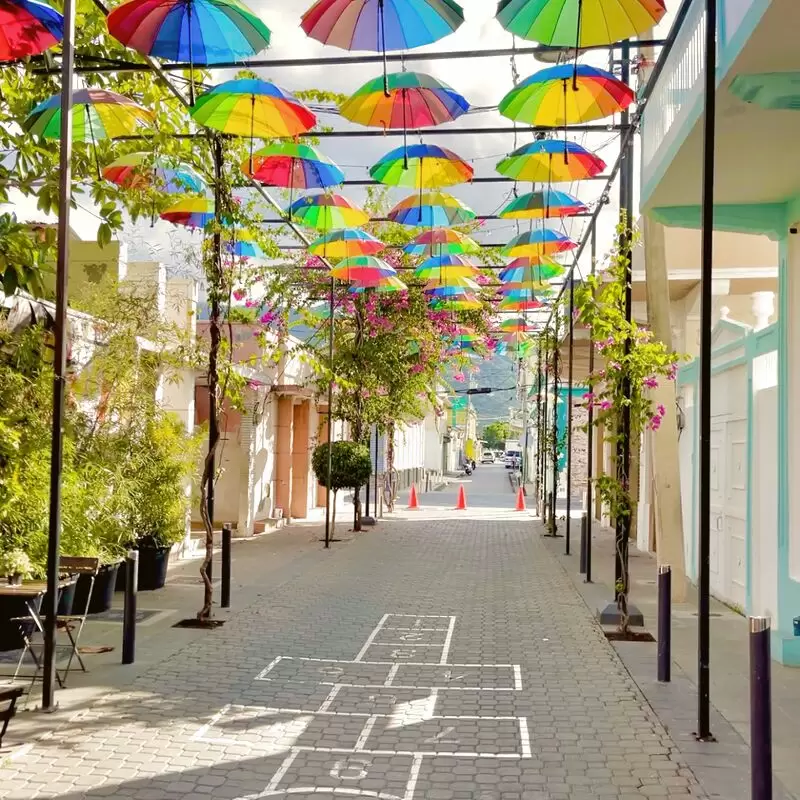 Umbrella Street
Umbrella Street
Q8X4+964, C. San Felipe, Puerto Plata
Monday - Sunday: Open 24 hours

Q8X4+964, C. San Felipe, Puerto Plata
9. Taíno Bay Cruise Port
Discover the vibrant gateway to Puerto Plata at Taíno Bay Cruise Port, where rich culture meets stunning nature. Explore the affair of local art and cuisine right at the port, or take a short ride to the nearby historic center. Just minutes away, you can marvel at the amber treasures in the Amber Museum or ride the cable car to the top of Isabel de Torres Mountain for breathtaking views. Each corner of Taíno Bay offers a new adventure and authentic Dominican experiences.
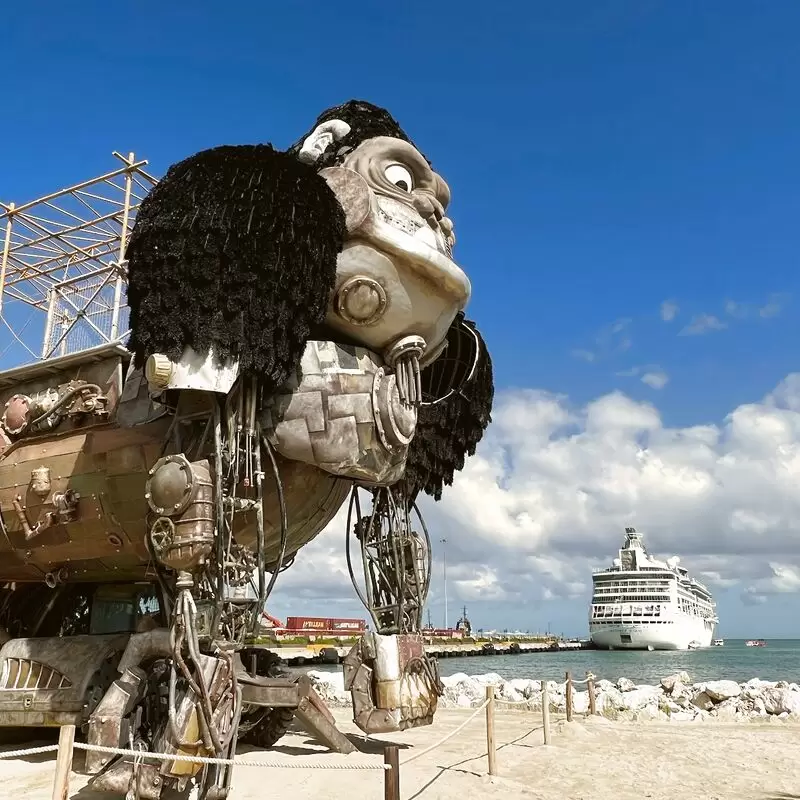 Taíno Bay Cruise Port
Taíno Bay Cruise Port
Av. Antigua Via Férrea Muelle Turístico entre Av. Penetración Portuaria y, Calle Duarte, Puerto Plata
Monday - Sunday: 8:00 AM – 6:00 PM

Av. Antigua Via Férrea Muelle Turístico entre Av. Penetración Portuaria y, Calle Duarte, Puerto Plata
10. Cathedral of St. Philip the Apostle
The Cathedral of St. Philip the Apostle, with its stunning stained glass and striking twin towers, is a gem in Puerto Plata's historical crown. Located right on the vibrant central square, it’s more than a spiritual retreat; it’s a glimpse into Dominican culture and history. Don’t miss the local artisans selling their crafts nearby. Afterward, explore the nearby San Felipe Fortress for panoramic ocean views. Such unique moments capture the essence of Dominican heritage and charm.
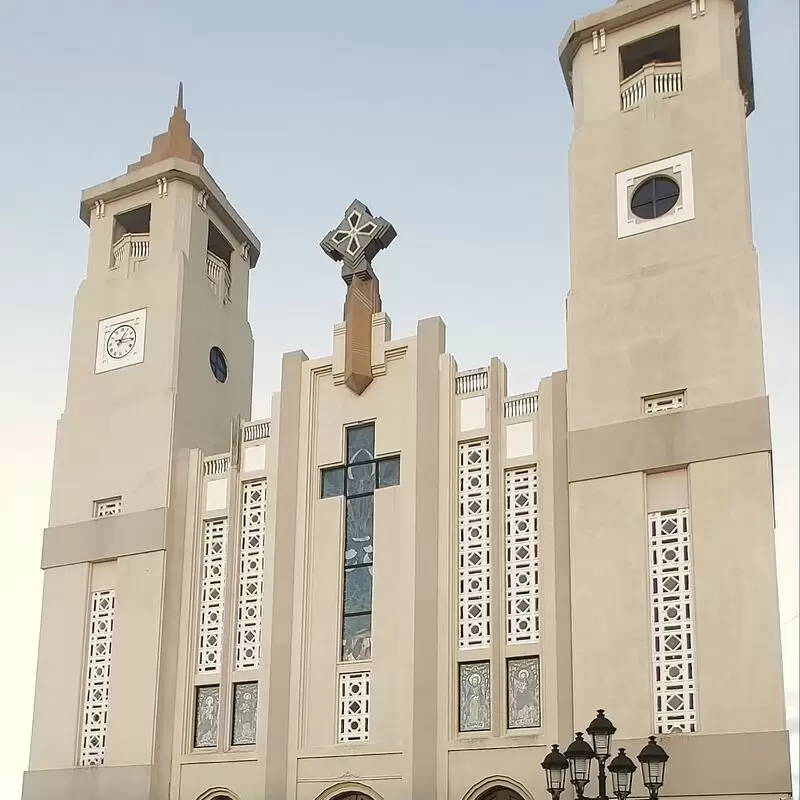 Cathedral of St. Philip the Apostle
Cathedral of St. Philip the Apostle
C. José del Carmen Ariza 36, Puerto Plata
Monday - Saturday: 5:30 – 6:30 PM
Sunday: 6:30 – 7:30 AM, 8:30 – 9:30 AM, 10:00 – 11:00 AM, 11:30 AM – 12:30 PM, 5:30 – 6:30 PM

C. José del Carmen Ariza 36, Puerto Plata
Sunday: 6:30 – 7:30 AM, 8:30 – 9:30 AM, 10:00 – 11:00 AM, 11:30 AM – 12:30 PM, 5:30 – 6:30 PM
11. 27 Waterfalls of Damajagua
Experience the thrill of a lifetime at the 27 Waterfalls of Damajagua near Puerto Plata, where nature’s waterslides and crystal-clear pools create an unparalleled adventure. This hidden gem invites you to jump, slide, and swim through its cascading beauty. Bring water shoes to navigate the rocky terrains safely. Just a short distance away, explore El Choco National Park with its enchanting caves and lush flora, offering another day of unforgettable exploration in paradise.
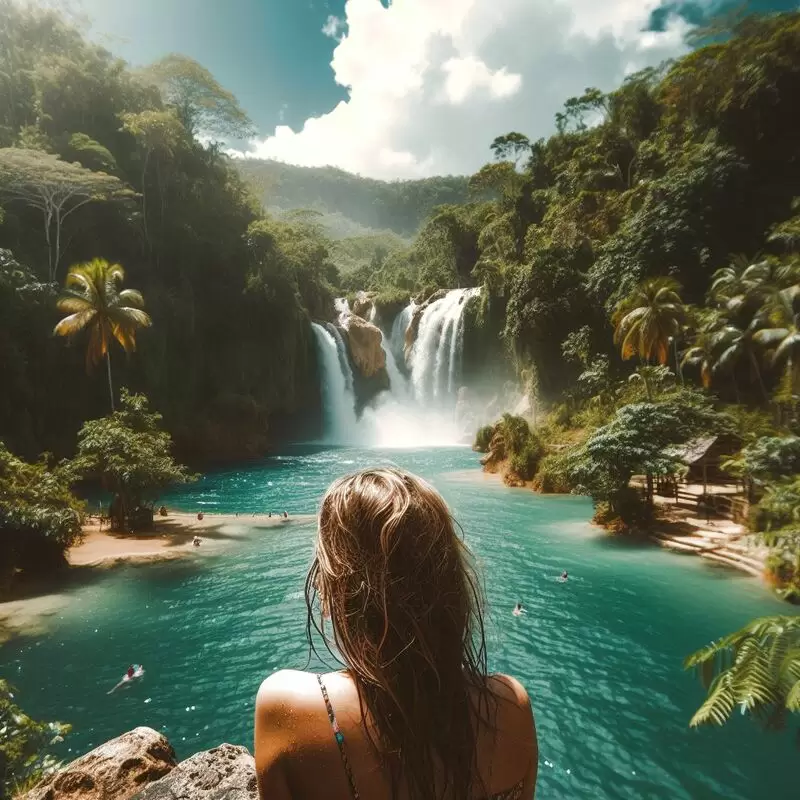 27 Waterfalls of Damajagua
27 Waterfalls of Damajagua
Damajagua
Monday: 9:00 AM – 5:00 PM
Tuesday - Sunday: 8:00 AM – 3:00 PM

Damajagua
Tuesday - Sunday: 8:00 AM – 3:00 PM
12. Paseo de Doña Blanca
Stroll through the vibrant "Paseo de Doña Blanca" in Puerto Plata, where striking pink and white hues create a picturesque setting that’s perfect for photos and leisurely walks. Legend has it that this charming pathway was painted in these colors in honor of Doña Blanca, the wife of a prominent town figure. Just a stone's throw away, you'll find the beautiful San Felipe Cathedral. After your visit, treat yourself to a delicious Mabi drink from a nearby vendor.
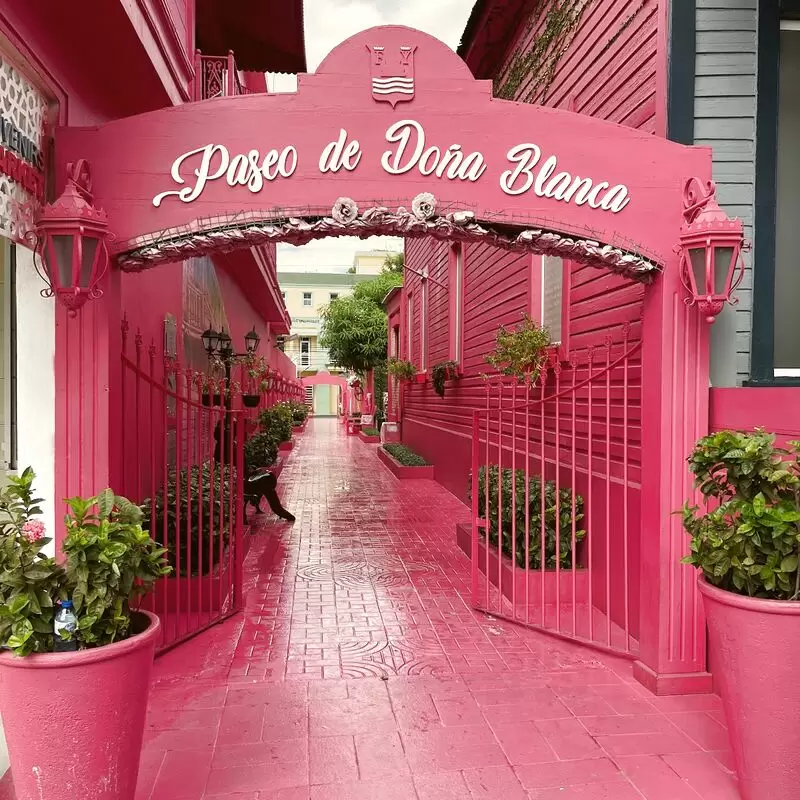 Paseo de Doña Blanca
Paseo de Doña Blanca
C. Beller No.30, Puerto Plata
Monday - Sunday: Open 24 hours

C. Beller No.30, Puerto Plata
13. Macorix House of Rum
Discover the vibrant spirit of the Dominican Republic at Macorix House of Rum in Puerto Plata! This captivating spot offers an immersive journey through the art of rum-making, where you’ll engage with expert guides and savor a variety of exquisite rums. The experience is enriched by the venue's blend of heritage and modernity. Just a short stroll away is the Malecón, a scenic seaside avenue perfect for a leisurely walk to soak in the local culture.
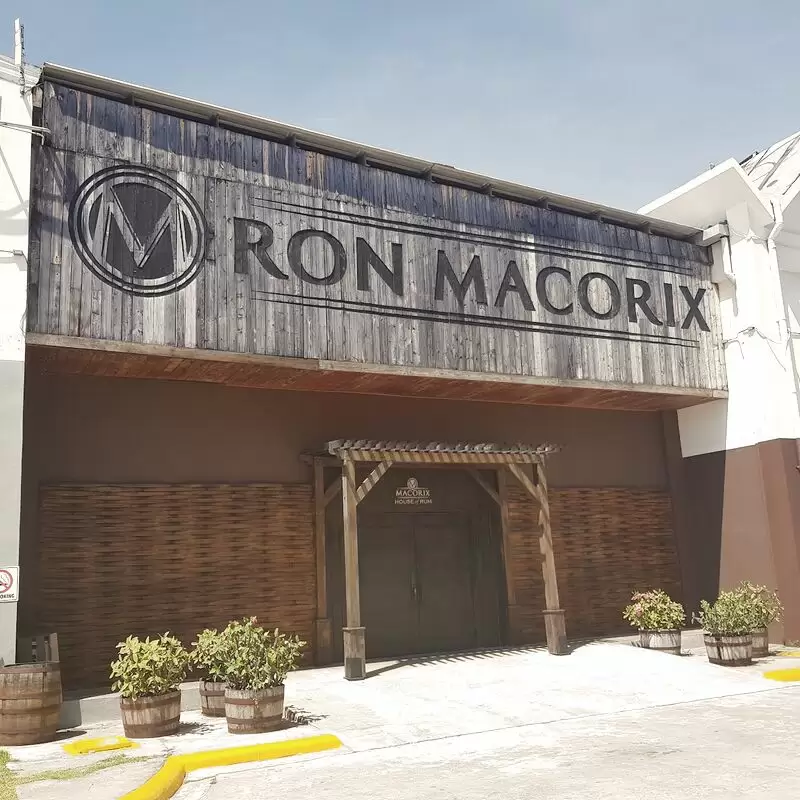 Macorix House of Rum
Macorix House of Rum
Av. Francisco Alberto Caamaño, Puerto Plata
Monday - Friday: 9:00 AM – 4:00 PM
Saturday: 9:00 AM – 12:30 PM
Sunday: Closed

Av. Francisco Alberto Caamaño, Puerto Plata
Saturday: 9:00 AM – 12:30 PM
Sunday: Closed
14. National Park El Choco y Las Cuevas de Cabarete
Explore the enchanting beauty of National Park El Choco y Las Cuevas de Cabarete, a true gem in Puerto Plata! Wander through its lush landscapes and discover fascinating limestone caves like Cueva de Cristal. The park is teeming with diverse wildlife—catch a glimpse of colorful birds and elusive lizards. Just minutes away, dive into the vibrant surf culture of Cabarete Beach. Once you're there, savor some local seafood at hidden beachside shacks for an authentic taste of the Dominican lifestyle.
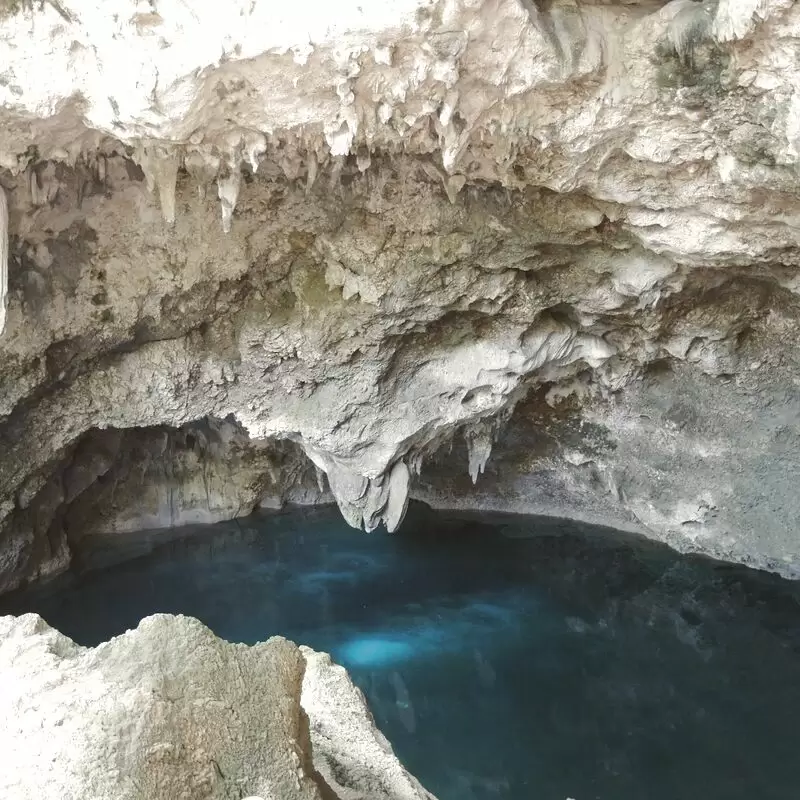 National Park El Choco y Las Cuevas de Cabarete
National Park El Choco y Las Cuevas de Cabarete
5 16, Cabarete

5 16, Cabarete
Best Time to Visit Puerto Plata
The best time to visit Puerto Plata is between December and April. During these months, the weather is generally dry and pleasant, making it ideal for beach activities and exploring. This period also coincides with the peak tourist season, so expect lively atmospheres and events. Keep in mind that if you prefer fewer crowds and affordable prices, visiting in late spring or early fall might be ideal.
Annual Weather in Puerto Plata
January
Jan
70 / 82 °F
21 / 28 °C
1
4
78
February
Feb
70 / 82 °F
21 / 28 °C
1
3
69
March
Mar
70 / 84 °F
21 / 29 °C
1
4
88
April
Apr
72 / 84 °F
22 / 29 °C
1
5
81
May
May
74 / 86 °F
23 / 30 °C
1
11
80
June
Jun
76 / 88 °F
24 / 31 °C
1
7
90
July
Jul
76 / 87 °F
25 / 31 °C
1
7
93
August
Aug
76 / 87 °F
25 / 31 °C
1
6
94
September
Sep
76 / 88 °F
25 / 31 °C
1
12
88
October
Oct
75 / 87 °F
24 / 31 °C
1
11
87
November
Nov
73 / 84 °F
23 / 29 °C
1
8
69
December
Dec
71 / 83 °F
22 / 28 °C
1
3
74
Questions & Answers
Is it safe to visit Puerto Plata?
Puerto Plata is generally considered a safe destination for travelers, but like any tourist spot, it’s wise to exercise caution. Petty crime, such as pickpocketing, can occur, so it's smart to keep an eye on your belongings. Stick to well-lit areas at night and be sensible when exploring. The local community is welcoming, and many visitors have positive experiences. Staying informed and following travel advisories can contribute to a safe and enjoyable trip in this beautiful part of the Dominican Republic.
Do I need a visa to enter the Dominican Republic?
Whether you need a visa to enter the Dominican Republic largely depends on your nationality and the intended length of your stay. Many tourists from countries such as the United States, Canada, and European Union members do not need a visa for short tourist visits. Instead, travelers typically require a tourist card, which is included in airfare or can be purchased upon arrival. It's always best to verify specific entry requirements with the nearest Dominican consulate or embassy before your trip.
What is the local currency?
In Puerto Plata, Dominican Republic, the local currency is the Dominican Peso, often abbreviated as DOP or referred to simply as "pesos." While the peso is the official currency, U.S. dollars are also widely accepted in tourist areas and resorts. However, using the local currency might offer better value when dealing with local businesses. It's always a good idea to have some pesos on hand for small purchases or when exploring more traditional markets and neighborhoods.
Is tap water safe to drink?
When visiting Puerto Plata, it's best to avoid drinking tap water directly. The local water isn't always treated to the standards some visitors might expect. Instead, opt for bottled water, which is widely available and affordable. This precaution helps prevent any potential stomach issues. Additionally, many hotels and restaurants offer filtered water for guests. When brushing your teeth, consider using bottled water as well, just to be on the safe side. Enjoy your stay and stay hydrated!
How do I get around the city?
Getting around Puerto Plata is a breeze with various options available. You can catch a local guagua for an affordable and authentic experience or hire a motoconcho, which offers a quick ride on a motorcycle. Taxis are convenient for those who prefer comfort, while car rentals offer flexibility for exploring at your own pace. For a scenic journey, try the Teleférico cable car to enjoy mesmerizing views of the city and surrounding landscapes.
What language do people speak?
In Puerto Plata, Dominican Republic, the primary language spoken is Spanish. You'll find that most locals speak Spanish as their first language, and you'll hear it everywhere from bustling markets to serene beaches. While some people in the tourism sector, such as those working in hotels and restaurants, may speak English to accommodate international visitors, it's always helpful to know a few Spanish phrases. This not only aids communication but also enriches your cultural experience in this vibrant destination.
Are there any health precautions I should take?
When traveling to Puerto Plata, consider staying updated on routine vaccinations and consult a healthcare provider for advice specific to your health needs. Protect yourself against insect bites with repellent, as mosquito-borne illnesses can occur. Safe food and water practices help prevent stomach issues, so opt for bottled water and dine at reputable establishments. Always wear sunscreen and stay hydrated to adapt to the tropical climate comfortably. Travel insurance can be a wise backup in case of unforeseen medical needs.
How do I access local emergency services?
If you find yourself in an emergency while in Puerto Plata, you can dial 911 for immediate assistance, as this service connects you to police, fire, and medical responders. It's beneficial to learn a few basic Spanish phrases since English might not be universally spoken. Maintain a copy of your travel insurance details handy, especially if medical attention is needed. Don't hesitate to ask hotel staff or locals for help, as their familiarity with the area can be invaluable in guiding you efficiently.
Is it easy to find Wi-Fi?
Finding Wi-Fi in Puerto Plata is generally quite convenient. Many hotels, resorts, and vacation rentals offer free Wi-Fi for their guests. Additionally, cafés, restaurants, and bars often provide internet access, though it might require a purchase. In tourist areas, you might even spot public Wi-Fi hotspots. However, connection quality can vary, especially outside urban areas. If you need reliable internet, consider getting a local SIM card with a data package for uninterrupted connectivity during your stay.
How can I experience local culture?
To truly experience the local culture in Puerto Plata, immerse yourself in the vibrant life of the city. Wander through the bustling local markets, where you can savor traditional Dominican flavors and chat with friendly vendors. Explore historic landmarks like the San Felipe Fortress, reflecting the city's colonial past. Take part in community festivals that showcase lively music and dance. Don't miss visiting a local rum distillery to appreciate the island's renowned spirits. Engaging with locals will enrich your journey.
What are the best local dishes to try?
When visiting Puerto Plata, indulging in the local flavors is a must. Savor the rich and aromatic *sancocho*, a hearty stew often made with seven types of meat and a medley of root vegetables. Don't miss out on *mangu*, a comforting dish of mashed plantains traditionally enjoyed with fried cheese, salami, and eggs. For a sweet touch, try *dulce de leche cortada*, a simple yet delightful dessert. These dishes capture the essence of the Dominican culinary tradition.
Can I use US dollars in Puerto Plata?
Yes, you can use US dollars in Puerto Plata, but it's a good idea to have some Dominican pesos on hand for a seamless local experience. Many shops, restaurants, and tours accept dollars, but smaller vendors and rural areas are more peso-friendly. Keep an eye on the exchange rate, and try to use pesos for better prices. Also, ensure your bills are in good condition, as some places might not accept worn or torn currency.
Are there any travel scams to be aware of?
While Puerto Plata is generally safe for tourists, it's wise to stay vigilant. Be cautious of overly friendly locals offering unsolicited tours or assistance, as they may expect a hefty tip or lead you to overpriced venues. Ensure taxis use meters or agree on a fare beforehand to avoid overcharging. Be careful when using ATMs and stick to those located in banks or reputable hotels to prevent card skimming. Always use reputable tour operators for excursions to ensure safety and fair pricing.
How do I exchange money?
To exchange money in Puerto Plata, you can visit banks for reliable rates, although they may have shorter hours. Money exchange bureaus, known as "casas de cambio," offer convenient options and more flexible hours. It's wise to compare rates at a few places to ensure you’re getting a good deal. Always count your cash before leaving and avoid exchanging money on the street to dodge scams. Using ATMs is another convenient way, but check for international fees.
Do I need travel insurance?
While travel insurance isn't a legal requirement for visiting Puerto Plata, it's highly advisable to have it. This coverage can protect you financially against unforeseen events like medical emergencies, trip cancellations, or lost luggage. Healthcare costs in a foreign country can be expensive, and having insurance offers peace of mind. Consider your personal needs, the activities you plan, and your overall health. Ultimately, it's about making your trip stress-free, ensuring you're covered for the unexpected.
Can I rent a car easily?
Renting a car in Puerto Plata is a convenient option for exploring the area. There are several rental agencies both at the Gregorio Luperón International Airport and within the city. Major international companies as well as local agencies offer a variety of vehicles to suit different needs and budgets. It’s helpful to book in advance, especially during peak tourist seasons. Remember to carry a valid driver’s license and consider insurance options for peace of mind while driving around.
What is the standard tipping practice?
In Puerto Plata, tipping is generally appreciated but not obligatory. In restaurants, it's common to leave a tip of around 10-15% of the total bill to acknowledge good service. Hotel staff, such as bellhops or housekeepers, also appreciate a small tip for their assistance, typically a few dollars. Taxi drivers don't always expect a tip, but rounding up the fare is a nice gesture. Remember, tipping practices are flexible, and offering appreciation for good service is always welcomed.
Are there any cultural etiquette tips I should know?
When visiting Puerto Plata, it's essential to embrace the warmth of its people. A friendly greeting, such as a handshake or a kiss on the cheek, goes a long way. Dress modestly, especially when visiting religious sites. Punctuality is flexible, so expect some delays. Engaging in light conversation before diving into serious topics is appreciated. Using basic Spanish phrases shows respect. Lastly, practice patience and kindness, reflecting the easy-going Dominican vibe.
How can I respect the local environment?
When visiting Puerto Plata, you can respect the local environment by taking steps to minimize your ecological footprint. Choose eco-friendly accommodations that support sustainability, and be mindful of using water and electricity sparingly. Opt for guided tours that promote conservation and educate about local ecosystems. Always carry reusable bags, bottles, and containers to reduce waste. Respect wildlife and marine life by observing from a distance, and make it a point to leave natural spaces cleaner than you found them.
Can I use my phone without roaming charges?
Using your phone in Puerto Plata without incurring roaming charges is possible with a few strategies. Consider purchasing a local SIM card upon arrival, which can save you money and provide you with a local number. You'll need an unlocked phone to do this. Alternatively, use Wi-Fi for calls and data where available. Many hotels, cafes, and public places offer free Wi-Fi. Also, exploring international phone plans with your carrier can offer budget-friendly options for travel.
What electricity voltage is used?
In Puerto Plata, as well as throughout the Dominican Republic, the electricity supply operates on a 110-120 volt, 60 Hz system, similar to what you'd find in North America. The outlets predominantly accommodate two-pronged flat plugs, which is the standard for the region. Visitors from countries that use different voltages or plug types should consider bringing adapters or converters to ensure their devices can be used safely. Beyond this practical detail, it’s always a great idea to prepare for occasional power outages, which are not uncommon.
Is English widely spoken?
In Puerto Plata, English is spoken, but its prevalence varies depending on where you are. In tourist areas, hotels, restaurants, and shops, you’ll find many staff members who speak English to accommodate international visitors. However, in more local or rural areas, Spanish is predominantly spoken, and English speakers might be harder to find. It can be helpful to know a few basic Spanish phrases to enhance your experience and ease communication with locals who may not speak English fluently.
How do I contact the U.S. Embassy?
If you're in Puerto Plata and need to contact the U.S. Embassy in the Dominican Republic, head to Santo Domingo, where the embassy is located. Reach out by phone to ensure fast communication; their main line is typically available on their official website. You can also explore their online resources for guidance on matters like passport services, travel advisories, or emergencies. For personal visits, it's advisable to schedule an appointment through their website to avoid long wait times.
Do locals expect bargaining in markets?
In Puerto Plata, bargaining at markets is generally an accepted practice and can even be seen as a cultural experience. Local vendors often set prices with some room for negotiation, expecting customers to engage in friendly haggling. It's important to approach the process with respect and a smile, as the goal is to reach a mutually agreeable price. Always remember, bargaining can be fun, and it's a great way to interact with locals and learn more about their customs.
Is it common to see wildlife?
Yes, it is quite common to see wildlife in Puerto Plata, Dominican Republic. The region is home to a variety of animals, both on land and in the water. In the lush forests and mountains, you might catch glimpses of colorful birds and iguanas, while the coastal areas offer sightings of dolphins and even humpback whales. Whether you're exploring the natural parks or simply enjoying the beaches, the vibrant wildlife adds a special touch to any visit.
How reliable is public transportation?
Public transportation in Puerto Plata offers a mix of methods, from guaguas (minibuses) to motoconchos (motorbike taxis). While these options are widely available and affordable, they can be inconsistent in terms of schedules and reliability. These services might not always adhere to strict timing, and can occasionally be crowded. For short distances and city exploration, they can be quite convenient. However, for travel with defined timings, you might want to consider private taxis or rental vehicles.
Are there any dress codes to follow?
When visiting Puerto Plata, the dress code is generally casual and relaxed, especially at beaches and resorts. Lightweight clothing is ideal due to the warm climate, but when visiting churches or upscale restaurants, it's best to dress modestly. Swimwear is acceptable at the beach but not in town or dining venues. In evenings, some restaurants and bars appreciate smart-casual attire. Comfort is key, so bring breathable fabrics to enjoy the tropical vibe while respecting local customs.
Can I access medical facilities easily?
Absolutely, accessing medical facilities in Puerto Plata is relatively straightforward. The city is equipped with both public and private healthcare options. You'll find modern hospitals and clinics staffed with professional medical personnel ready to assist. Many doctors and staff speak English, making communication easier for visitors. Whether you're dealing with a minor issue or need more serious care, services are generally accessible around the clock, ensuring that you have peace of mind during your stay.
How do I deal with street vendors?
When engaging with street vendors in Puerto Plata, a friendly attitude goes a long way. Expect vendors to be persistent, and respond with firm yet polite declines if you're not interested. Feel free to negotiate prices, as haggling is common and part of the local culture. Always maintain a sense of humor and patience. Show genuine interest if something catches your eye. Remember, these interactions can be a great way to learn more about local customs and crafts.
What are the local customs for greetings?
In Puerto Plata, greeting customs reflect the warmth and friendliness of the Dominican culture. A common greeting is a firm handshake accompanied by direct eye contact and a smile. For closer friends and family, a light hug or a kiss on the cheek is customary. It's common to address someone with "Señor" or "Señora," followed by their last name, as a sign of respect. Taking a moment to ask about one's well-being before starting a conversation shows genuine interest and is appreciated.
Feedback
I hope you found this article informative and helpful. I'm eager to improve the content and make it even more valuable for you. If you have any feedback or suggestions, I would love to hear from you.
Do you have any tips or hidden gems that you think should be added to the list? Are there any areas that you feel could use more explanation or clarification?
Your input is greatly appreciated and will help us to continue providing high-quality content that meets your needs and interests. Please feel free to share your thoughts.
Is it safe to visit Puerto Plata?
Puerto Plata is generally considered a safe destination for travelers, but like any tourist spot, it’s wise to exercise caution. Petty crime, such as pickpocketing, can occur, so it's smart to keep an eye on your belongings. Stick to well-lit areas at night and be sensible when exploring. The local community is welcoming, and many visitors have positive experiences. Staying informed and following travel advisories can contribute to a safe and enjoyable trip in this beautiful part of the Dominican Republic.
Do I need a visa to enter the Dominican Republic?
Whether you need a visa to enter the Dominican Republic largely depends on your nationality and the intended length of your stay. Many tourists from countries such as the United States, Canada, and European Union members do not need a visa for short tourist visits. Instead, travelers typically require a tourist card, which is included in airfare or can be purchased upon arrival. It's always best to verify specific entry requirements with the nearest Dominican consulate or embassy before your trip.
What is the local currency?
In Puerto Plata, Dominican Republic, the local currency is the Dominican Peso, often abbreviated as DOP or referred to simply as "pesos." While the peso is the official currency, U.S. dollars are also widely accepted in tourist areas and resorts. However, using the local currency might offer better value when dealing with local businesses. It's always a good idea to have some pesos on hand for small purchases or when exploring more traditional markets and neighborhoods.
Is tap water safe to drink?
When visiting Puerto Plata, it's best to avoid drinking tap water directly. The local water isn't always treated to the standards some visitors might expect. Instead, opt for bottled water, which is widely available and affordable. This precaution helps prevent any potential stomach issues. Additionally, many hotels and restaurants offer filtered water for guests. When brushing your teeth, consider using bottled water as well, just to be on the safe side. Enjoy your stay and stay hydrated!
How do I get around the city?
Getting around Puerto Plata is a breeze with various options available. You can catch a local guagua for an affordable and authentic experience or hire a motoconcho, which offers a quick ride on a motorcycle. Taxis are convenient for those who prefer comfort, while car rentals offer flexibility for exploring at your own pace. For a scenic journey, try the Teleférico cable car to enjoy mesmerizing views of the city and surrounding landscapes.
What language do people speak?
In Puerto Plata, Dominican Republic, the primary language spoken is Spanish. You'll find that most locals speak Spanish as their first language, and you'll hear it everywhere from bustling markets to serene beaches. While some people in the tourism sector, such as those working in hotels and restaurants, may speak English to accommodate international visitors, it's always helpful to know a few Spanish phrases. This not only aids communication but also enriches your cultural experience in this vibrant destination.
Are there any health precautions I should take?
When traveling to Puerto Plata, consider staying updated on routine vaccinations and consult a healthcare provider for advice specific to your health needs. Protect yourself against insect bites with repellent, as mosquito-borne illnesses can occur. Safe food and water practices help prevent stomach issues, so opt for bottled water and dine at reputable establishments. Always wear sunscreen and stay hydrated to adapt to the tropical climate comfortably. Travel insurance can be a wise backup in case of unforeseen medical needs.
How do I access local emergency services?
If you find yourself in an emergency while in Puerto Plata, you can dial 911 for immediate assistance, as this service connects you to police, fire, and medical responders. It's beneficial to learn a few basic Spanish phrases since English might not be universally spoken. Maintain a copy of your travel insurance details handy, especially if medical attention is needed. Don't hesitate to ask hotel staff or locals for help, as their familiarity with the area can be invaluable in guiding you efficiently.
Is it easy to find Wi-Fi?
Finding Wi-Fi in Puerto Plata is generally quite convenient. Many hotels, resorts, and vacation rentals offer free Wi-Fi for their guests. Additionally, cafés, restaurants, and bars often provide internet access, though it might require a purchase. In tourist areas, you might even spot public Wi-Fi hotspots. However, connection quality can vary, especially outside urban areas. If you need reliable internet, consider getting a local SIM card with a data package for uninterrupted connectivity during your stay.
How can I experience local culture?
To truly experience the local culture in Puerto Plata, immerse yourself in the vibrant life of the city. Wander through the bustling local markets, where you can savor traditional Dominican flavors and chat with friendly vendors. Explore historic landmarks like the San Felipe Fortress, reflecting the city's colonial past. Take part in community festivals that showcase lively music and dance. Don't miss visiting a local rum distillery to appreciate the island's renowned spirits. Engaging with locals will enrich your journey.
What are the best local dishes to try?
When visiting Puerto Plata, indulging in the local flavors is a must. Savor the rich and aromatic *sancocho*, a hearty stew often made with seven types of meat and a medley of root vegetables. Don't miss out on *mangu*, a comforting dish of mashed plantains traditionally enjoyed with fried cheese, salami, and eggs. For a sweet touch, try *dulce de leche cortada*, a simple yet delightful dessert. These dishes capture the essence of the Dominican culinary tradition.
Can I use US dollars in Puerto Plata?
Yes, you can use US dollars in Puerto Plata, but it's a good idea to have some Dominican pesos on hand for a seamless local experience. Many shops, restaurants, and tours accept dollars, but smaller vendors and rural areas are more peso-friendly. Keep an eye on the exchange rate, and try to use pesos for better prices. Also, ensure your bills are in good condition, as some places might not accept worn or torn currency.
Are there any travel scams to be aware of?
While Puerto Plata is generally safe for tourists, it's wise to stay vigilant. Be cautious of overly friendly locals offering unsolicited tours or assistance, as they may expect a hefty tip or lead you to overpriced venues. Ensure taxis use meters or agree on a fare beforehand to avoid overcharging. Be careful when using ATMs and stick to those located in banks or reputable hotels to prevent card skimming. Always use reputable tour operators for excursions to ensure safety and fair pricing.
How do I exchange money?
To exchange money in Puerto Plata, you can visit banks for reliable rates, although they may have shorter hours. Money exchange bureaus, known as "casas de cambio," offer convenient options and more flexible hours. It's wise to compare rates at a few places to ensure you’re getting a good deal. Always count your cash before leaving and avoid exchanging money on the street to dodge scams. Using ATMs is another convenient way, but check for international fees.
Do I need travel insurance?
While travel insurance isn't a legal requirement for visiting Puerto Plata, it's highly advisable to have it. This coverage can protect you financially against unforeseen events like medical emergencies, trip cancellations, or lost luggage. Healthcare costs in a foreign country can be expensive, and having insurance offers peace of mind. Consider your personal needs, the activities you plan, and your overall health. Ultimately, it's about making your trip stress-free, ensuring you're covered for the unexpected.
Can I rent a car easily?
Renting a car in Puerto Plata is a convenient option for exploring the area. There are several rental agencies both at the Gregorio Luperón International Airport and within the city. Major international companies as well as local agencies offer a variety of vehicles to suit different needs and budgets. It’s helpful to book in advance, especially during peak tourist seasons. Remember to carry a valid driver’s license and consider insurance options for peace of mind while driving around.
What is the standard tipping practice?
In Puerto Plata, tipping is generally appreciated but not obligatory. In restaurants, it's common to leave a tip of around 10-15% of the total bill to acknowledge good service. Hotel staff, such as bellhops or housekeepers, also appreciate a small tip for their assistance, typically a few dollars. Taxi drivers don't always expect a tip, but rounding up the fare is a nice gesture. Remember, tipping practices are flexible, and offering appreciation for good service is always welcomed.
Are there any cultural etiquette tips I should know?
When visiting Puerto Plata, it's essential to embrace the warmth of its people. A friendly greeting, such as a handshake or a kiss on the cheek, goes a long way. Dress modestly, especially when visiting religious sites. Punctuality is flexible, so expect some delays. Engaging in light conversation before diving into serious topics is appreciated. Using basic Spanish phrases shows respect. Lastly, practice patience and kindness, reflecting the easy-going Dominican vibe.
How can I respect the local environment?
When visiting Puerto Plata, you can respect the local environment by taking steps to minimize your ecological footprint. Choose eco-friendly accommodations that support sustainability, and be mindful of using water and electricity sparingly. Opt for guided tours that promote conservation and educate about local ecosystems. Always carry reusable bags, bottles, and containers to reduce waste. Respect wildlife and marine life by observing from a distance, and make it a point to leave natural spaces cleaner than you found them.
Can I use my phone without roaming charges?
Using your phone in Puerto Plata without incurring roaming charges is possible with a few strategies. Consider purchasing a local SIM card upon arrival, which can save you money and provide you with a local number. You'll need an unlocked phone to do this. Alternatively, use Wi-Fi for calls and data where available. Many hotels, cafes, and public places offer free Wi-Fi. Also, exploring international phone plans with your carrier can offer budget-friendly options for travel.
What electricity voltage is used?
In Puerto Plata, as well as throughout the Dominican Republic, the electricity supply operates on a 110-120 volt, 60 Hz system, similar to what you'd find in North America. The outlets predominantly accommodate two-pronged flat plugs, which is the standard for the region. Visitors from countries that use different voltages or plug types should consider bringing adapters or converters to ensure their devices can be used safely. Beyond this practical detail, it’s always a great idea to prepare for occasional power outages, which are not uncommon.
Is English widely spoken?
In Puerto Plata, English is spoken, but its prevalence varies depending on where you are. In tourist areas, hotels, restaurants, and shops, you’ll find many staff members who speak English to accommodate international visitors. However, in more local or rural areas, Spanish is predominantly spoken, and English speakers might be harder to find. It can be helpful to know a few basic Spanish phrases to enhance your experience and ease communication with locals who may not speak English fluently.
How do I contact the U.S. Embassy?
If you're in Puerto Plata and need to contact the U.S. Embassy in the Dominican Republic, head to Santo Domingo, where the embassy is located. Reach out by phone to ensure fast communication; their main line is typically available on their official website. You can also explore their online resources for guidance on matters like passport services, travel advisories, or emergencies. For personal visits, it's advisable to schedule an appointment through their website to avoid long wait times.
Do locals expect bargaining in markets?
In Puerto Plata, bargaining at markets is generally an accepted practice and can even be seen as a cultural experience. Local vendors often set prices with some room for negotiation, expecting customers to engage in friendly haggling. It's important to approach the process with respect and a smile, as the goal is to reach a mutually agreeable price. Always remember, bargaining can be fun, and it's a great way to interact with locals and learn more about their customs.
Is it common to see wildlife?
Yes, it is quite common to see wildlife in Puerto Plata, Dominican Republic. The region is home to a variety of animals, both on land and in the water. In the lush forests and mountains, you might catch glimpses of colorful birds and iguanas, while the coastal areas offer sightings of dolphins and even humpback whales. Whether you're exploring the natural parks or simply enjoying the beaches, the vibrant wildlife adds a special touch to any visit.
How reliable is public transportation?
Public transportation in Puerto Plata offers a mix of methods, from guaguas (minibuses) to motoconchos (motorbike taxis). While these options are widely available and affordable, they can be inconsistent in terms of schedules and reliability. These services might not always adhere to strict timing, and can occasionally be crowded. For short distances and city exploration, they can be quite convenient. However, for travel with defined timings, you might want to consider private taxis or rental vehicles.
Are there any dress codes to follow?
When visiting Puerto Plata, the dress code is generally casual and relaxed, especially at beaches and resorts. Lightweight clothing is ideal due to the warm climate, but when visiting churches or upscale restaurants, it's best to dress modestly. Swimwear is acceptable at the beach but not in town or dining venues. In evenings, some restaurants and bars appreciate smart-casual attire. Comfort is key, so bring breathable fabrics to enjoy the tropical vibe while respecting local customs.
Can I access medical facilities easily?
Absolutely, accessing medical facilities in Puerto Plata is relatively straightforward. The city is equipped with both public and private healthcare options. You'll find modern hospitals and clinics staffed with professional medical personnel ready to assist. Many doctors and staff speak English, making communication easier for visitors. Whether you're dealing with a minor issue or need more serious care, services are generally accessible around the clock, ensuring that you have peace of mind during your stay.
How do I deal with street vendors?
When engaging with street vendors in Puerto Plata, a friendly attitude goes a long way. Expect vendors to be persistent, and respond with firm yet polite declines if you're not interested. Feel free to negotiate prices, as haggling is common and part of the local culture. Always maintain a sense of humor and patience. Show genuine interest if something catches your eye. Remember, these interactions can be a great way to learn more about local customs and crafts.
What are the local customs for greetings?
In Puerto Plata, greeting customs reflect the warmth and friendliness of the Dominican culture. A common greeting is a firm handshake accompanied by direct eye contact and a smile. For closer friends and family, a light hug or a kiss on the cheek is customary. It's common to address someone with "Señor" or "Señora," followed by their last name, as a sign of respect. Taking a moment to ask about one's well-being before starting a conversation shows genuine interest and is appreciated.
Feedback
I hope you found this article informative and helpful. I'm eager to improve the content and make it even more valuable for you. If you have any feedback or suggestions, I would love to hear from you.
Do you have any tips or hidden gems that you think should be added to the list? Are there any areas that you feel could use more explanation or clarification?
Your input is greatly appreciated and will help us to continue providing high-quality content that meets your needs and interests. Please feel free to share your thoughts.
I hope you found this article informative and helpful. I'm eager to improve the content and make it even more valuable for you. If you have any feedback or suggestions, I would love to hear from you.
Do you have any tips or hidden gems that you think should be added to the list? Are there any areas that you feel could use more explanation or clarification?
Your input is greatly appreciated and will help us to continue providing high-quality content that meets your needs and interests. Please feel free to share your thoughts.

